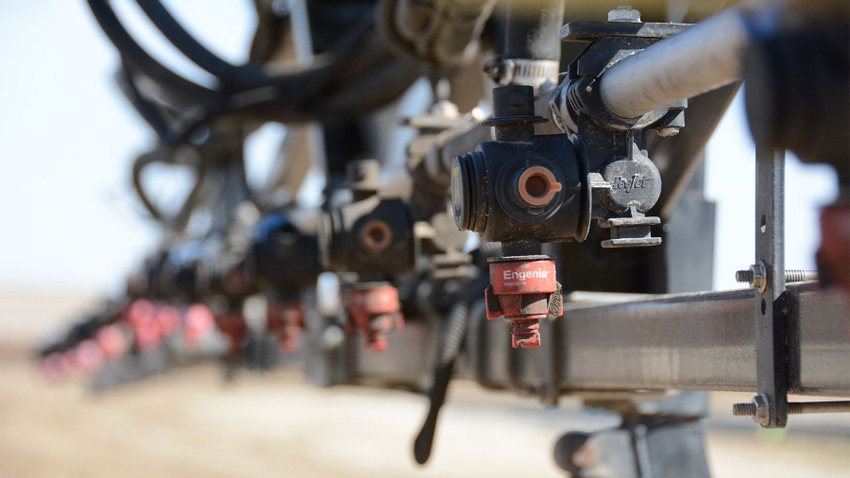
Water isn’t just a concern for thirsty crops that are being planted in dry soils across most of Iowa. Water — or a lack of water — also is a concern for herbicide applications that have or will be occurring.
Water-usage restrictions have been enacted in parts of Iowa. This may spur pesticide applicators to use alternative water sources for pesticide applications. Subbing water from treated rural water systems to surface or well water may impact water quality that can negatively affect herbicide performance.
Meaghan Anderson, Iowa State University Extension field agronomist, wrote a blog earlier this month on the subject. Here are some highlights on factors to consider:
Follow the label. “The [herbicide] label is always going to be the best reference for this kind of information,” Anderson says. Look for specific information regarding water hardness, water conditioners, pH of spray solutions and pH buffering or acidifying solutions. Some product labels will recommend adding a product to address specific water-quality concerns. In other cases, labels may prohibit using certain products that may alter the pH or other mixture characteristics. If the label recommends adding a specific product to remediate issues, pay special attention to the product’s recommended mixing order.
Look for the visible... Some water sources may contain obvious contaminants such as debris or suspended solids like soil particles in water. Herbicides can bind to soil suspended in water, Anderson says. This reduces absorption into the plant, especially if the herbicide is left to sit in water with suspended solids prior to application. Filters may help reduce problems, but using water sources without suspended solids or debris is the best option to avoid product performance issues.
…And the invisible. There’s a joke that some well water can be so hard that you can almost hear the iron chunks coming out of the spigot. That’s an exaggeration, for mineral content is not visible to the naked eye. Still, high concentrations of dissolved minerals are of particular concern in some Iowa well water.
While water hardness is measured based on the concentration of calcium and magnesium, dissolved minerals like aluminum, iron and sodium also can be a problem. Water high in these dissolved cations can attract negatively charged pesticide molecules and bind them, preventing or slowing their absorption into target plants.
Water pH can influence the stability of pesticides in spray mixtures. Some products may be highly sensitive to solution pH, but many products mix and perform well across a wide range of pH. Pay attention to any mention of specific pH ranges or limits on pesticide labels.
Water temperature also can impact the speed and quality of pesticide mixing, as well as the stability of mixtures. Water pulled directly from wells or surface water sources this spring may require warming for best pesticide-mixing performance. Read more about optimum water temperatures in this Purdue University Extension publication that’s available as a free download.
Testing is key
If you’re unsure of the quality of a new water source, the best practice is to test each source prior to use.
Several options exist that include:
Temperature. Thermometers provide reliable temperature measurements.
Suspended solids. Collect a water sample in a glass jar to observe for the settling of solids.
Dissolved minerals and pH. Both at-home kits and laboratories can provide useful information depending on the preciseness of data needed. Retailers that sell swimming pool supplies offer at-home kits that are fairly inexpensive.
More testing option information is available from Purdue University as a free download.
Can I reduce my carrier volume?
Some applicators may consider reducing carrier volume to conserve water this spring. Don’t do this if it goes against the product’s label. Reducing water volume may impact pesticide efficacy by negatively affecting spray coverage. This is particularly a concern with postemergence products.
The product label is the best reference for the minimum sufficient carrier volume for a pesticide, as well as other key factors to maintain adequate spray coverage, like adjuvants, nozzles and spray pressure.
Minimize problems later
While water-usage restrictions and changing water sources for pesticide application can add some uncertainty this spring, understanding the quality of your water sources now will minimize downtime and mixing or application problems.
Meaghan Anderson contributed to this story. It was reviewed by Bob Hartzler and Mike Owen, retired ISU Extension weed specialists, and Bill Johnson, a Purdue University Extension weeds specialist.
About the Author(s)
You May Also Like






